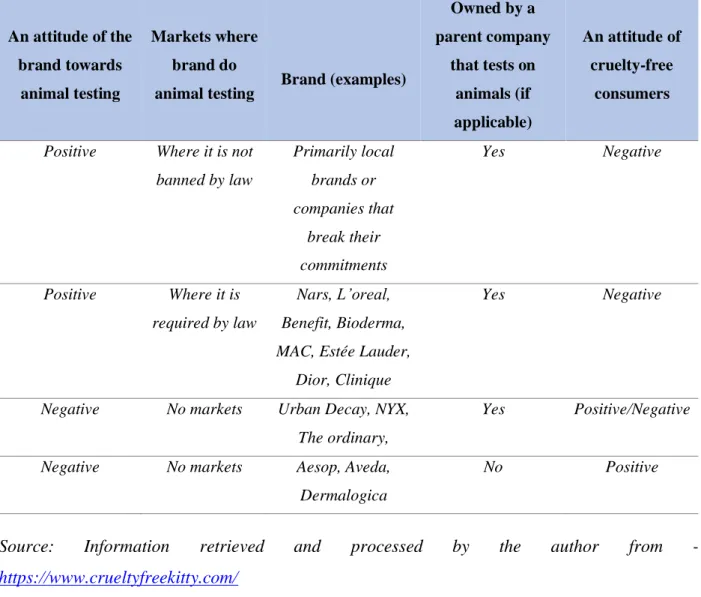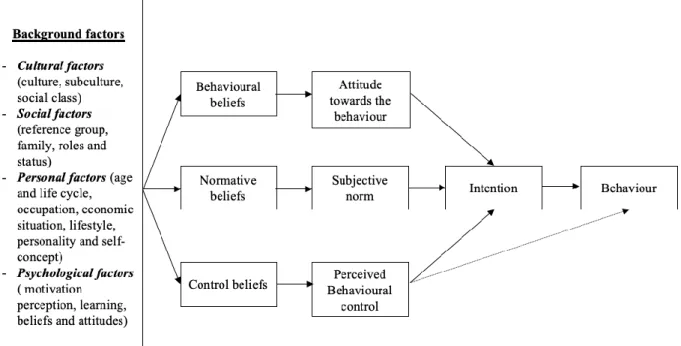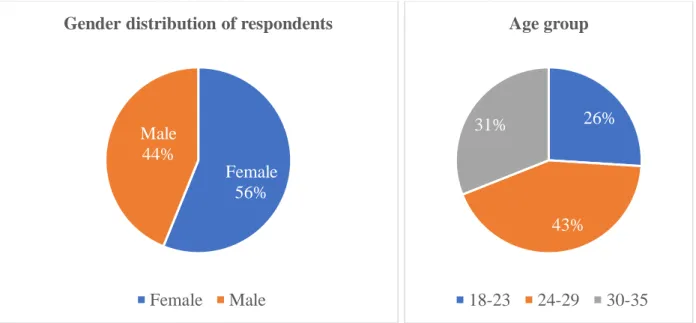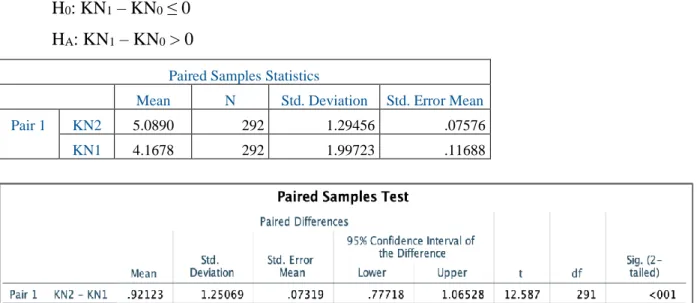The purpose of the given research is to determine and explore sociocultural factors that influence cruelty-free consumption on the beauty market among Russian consumers. The purchase of cruelty-free cosmetics (which are not tested on animals) is one of the forms of ethical consumer behavior. The topic of the given research is: "Sociocultural Factors Influencing Consumer Behavior in Cruelty Free Beauty Product Market".
Investigation of the cruelty-free consumption phenomenon
- Definition and background of cruelty-free consumption
- Barriers and motives for cruelty-free consumption
- Theoretical discourse on factors influencing cruelty-free consumption
- The phenomenon of consumer knowledge
- The phenomenon of consumer trust
- The phenomenon of social influence
- Challenges and opportunities of cruelty-free consumption in Russia
- Conclusion and hypotheses
In the context of the beauty market, cruelty-free consumption is often referred to as avoiding animal testing of products or ingredients. H3c: An increase in “consumer behavior” has a positive effect on the likelihood of purchasing cruelty-free products among consumers. H4c: An increase in “consumer trust” has a positive effect on the likelihood of purchasing cruelty-free products among consumers.
Low consumer confidence, in this case, is understood as consumers' trust in the cruelty-free status of the brand. H4c: Increase in the "consumer trust" positively affects the purchase probability of cruelty-free products among consumers.
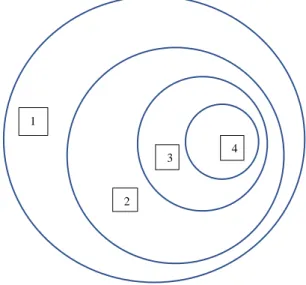
Research Methodology
Research Methodology Overview
According to the literature, trust means respect for cruelty-free cosmetics, trust in compliance with reality and consumers' expectations of cruelty-free cosmetics. It is one of the main aspects that shape the long-term relationship between the consumer and the product, and sometimes it also acts as a factor that influences the purchase intention (Chen and Chung, 2012). A low level of consumer trust in certain product categories or brands can be a serious socio-cultural barrier to consuming that product.
However, if the level of consumer confidence increases, this could have a positive effect on the adoption or transition to a certain type of consumption. Within these two versions of the experiment, we also analyze how the influence of a reference (friend/expert) can affect consumer familiarity and the likelihood of purchasing a cruelty-free brand. Accordingly, the respondents in these two versions of the experiment are divided into 2 subgroups: consumers with a low level of trust and consumers with a high level of trust.
The first part is based on an assessment of the influence of the chosen factor (consumer knowledge/consumer trust) on the consumer. The second part is aimed at assessing how social influence affects (consumer knowledge/consumer trust), as well as purchase probability for cruelty-free products. The third part contains general questions, which are used to gain a more in-depth understanding of the respondents' profiles.
The experiment was carefully designed and integrated with a questionnaire distributed among the respondents in order to achieve results as close as possible to reality and ultimately to confirm the set hypotheses.
Experimental design
The question presented in this section is used to assign you to one of the groups for the experiment. In the first part of the experiment respondents who chose α and β were exposed to a similar scenario where consumer knowledge of cruelty-free factors was tested. In the second part of the experiment, all groups were exposed to the influence of the specific reference group: for groups α and γ the influencer was a friend, while for groups β and δ the influencer was an expert from the cosmetics industry.
In the 3rd part of the experiment, all groups were asked the same general questions, mainly regarding demographic data. For that, the median of the response among all respondents from groups α and β will be calculated and respondents above the median will be assigned to a high consumer knowledge group, while those scoring lower median will be assigned to a low consumer knowledge group. First, the additional variable will be created by summing the value of questions 1 and 2 for each respondent accordingly.
In step 2, the median of the new variable will be calculated and the respondents will be distributed accordingly: respondents above the median will be classified into the high consumer trust group, and those below the median value will be classified into the low consumer trust group. . Part 2 of the survey was aimed at analyzing the impact of social stimuli on consumer knowledge/consumer trust and purchase probability. A paired samples t-test will be conducted to compare “consumer behavior about testing cosmetics” before exposure to social influence and after exposure to social influence.
Finally, the third part of the questionnaire was about the respondents, their general characteristics such as gender, age, level of income.
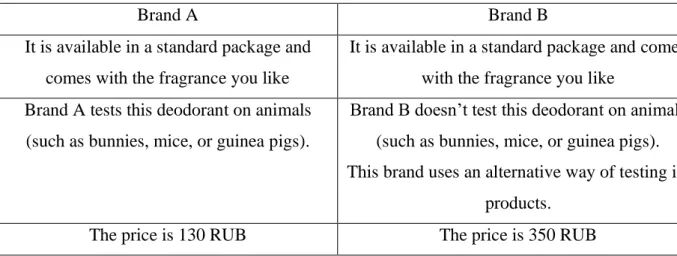
Findings and discussions
Data analysis and findings
- Analysis of the “consumer knowledge” factor
- Analysis of the “consumer trust” factor
Thus we can conclude that consumers' perception of information and its impact on consumer knowledge does not differ between the 2 scenarios: when consumers were exposed to an expert as a reference and when consumers were exposed to a friend as a reference. Based on the results of the regression analysis (Figure 14 and Figure 15), we can conclude that the model is significant, as shown by the results of the F-test. It means that an increase in consumer knowledge (our independent variable) explains only 15.8% of the variance in the change in purchase likelihood.
Looking more closely at the means of purchase probability for brands (Brand A –“1”; Brand B –.“2”) among our 2 groups of consumers (Figure 18), it can be observed that consumers with low trust have more radical preferences with regard to choosing a brand than consumers with high trust. Basically, due to the low level of trust, the brand's cruelty-free status is not significant for such a group of consumers. Based on these tests, we can conclude that the variation in consumer confidence before and after exposure to a reference is largely explained by the variation in consumer responses to Q2/Q19.
Furthermore, we can see that indeed the influence of a friend on consumer trust is stronger compared to the influence of an expert (Figure 22). Based on the results of the regression analysis (Figure 23), we can conclude that the model is significant, as shown by the results of the F-test. It means that an increase in consumer confidence (our independent variable) explains only 12.3% of the variance in the change in purchase likelihood.
However, the current model explains a low proportion of the variance, which means that some other factors may be missing.
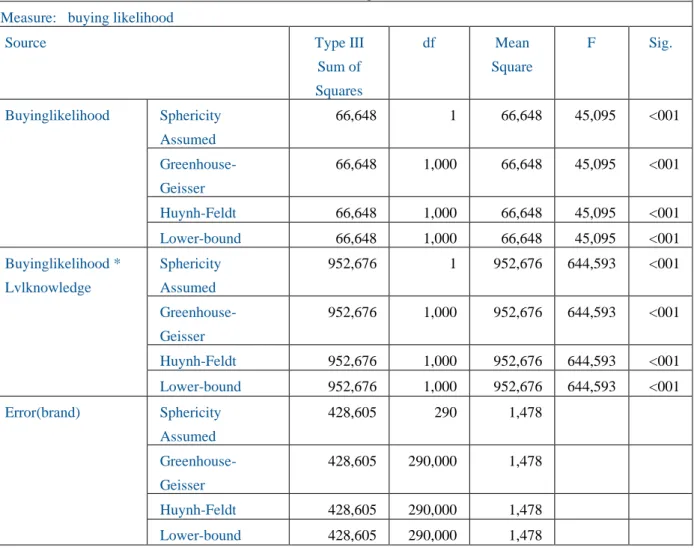
Theoretical contributions and managerial implications
In concluding this part of the analysis, we would like to summarize that all our hypotheses were accepted. a low-involvement product category that has not previously been used for cruelty-free cosmetics studies. First, as mentioned in the theoretical part, there is a large intention-behavior gap among Russian consumers regarding their attitude and actual behavior towards cruelty-free consumption. Although our research showed that some consumers are not ready to change their preferences, there is a large percentage of those who are ready to reconsider their purchase decision in favor of a cruelty-free product when they are exposed to more facts that need to be accepted. final decision.
In addition, the use of cruelty-free labels is a common practice in cruelty-free brands around the world. However, although consumers with higher trust levels are more likely to buy the cruelty-free brand, they have less polarized preferences between cruelty-free and non-cruelty-free brands. This means that a lack of trust in the brands, packaging and other attributes is a serious obstacle for Russian consumers to choose a more expensive cruelty-free product.
But as their level of trust increases, so does the likelihood of purchasing cruelty-free products. This means that for companies selling cruelty-free beauty products in Russia, it is essential to establish trust between their brand and Russian consumers. This leads to the implication that companies may prefer to use influencers who are outside the beauty market industry and are perceived by consumers as honest opinion leaders to build trust among Russian consumers on the cruelty-free topic.
Thus, as a result of this work, we completed the tasks and thereby achieved the goal of the work: we identified the main factors that influence the decision of Russian consumers to purchase cruelty-free cosmetics, quantified their impact and developed recommendations for companies from the beauty market industry.
Limitations and future research
The above points can be great opportunities to expand research in the field of cruelty-free consumption in the beauty market in Russia. In this work, we investigated theoretical aspects of cruelty-free consumption, including, in particular, the theory of planned behavior framework and consumer knowledge, consumer trust and social influence as the main factors influencing cruelty-free consumption. The literature review begins with an observation of existing definitions and classifications of ethical and cruelty-free consumption.
In addition, we investigated the current socio-cultural environment in Russia and the way it influences consumers' preferences towards cruelty-free cosmetics. This work fills a significant gap by examining the specifics of cruelty-free consumption in the Russian beauty market. An experimental approach was applied to evaluate the influence of the above factors on consumers' decision to buy a cruelty-free cosmetic product instead of a cosmetic product tested on animals.
Also, through the experiment, the social impact was evaluated through different types of reference (friend/expert) on the above-mentioned factors and cruelty-free behavior of consumers. We identified that all three factors have a significant impact on the cruelty-free consumption of cosmetic products. Based on the theoretical part and the empirical part of the research, we gave some recommendations for companies selling cruelty-free beauty products in Russia.
Hentet fra: https://www.mckinsey.com/business-functions/marketing-and-sales/our- insights/understanding-and-shaping-consumer-behavior-in-the-next-normal#.
Questionnaire
You are not familiar with any of these brands and do not know what they will be like. You want to make sure you buy the brand that will best suit your beliefs and needs. Find out which of the following signs means that the product is not tested on animals (multiple options): . a).
Two-Paired T-test for trust factors
